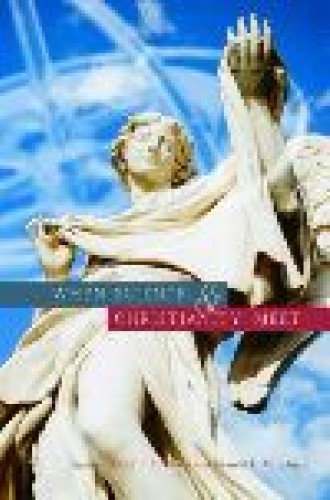When Science and Christianity Meet
Christian faith has generally had an uneasy and sometimes extremely contentious relationship with modern science, a relationship that this book explores. Ably edited by two University of Wisconsin historians of science, David C. Lindberg and Ronald Numbers, it presents various case histories aimed at helping us to understand the impact of different kinds of scientific investigations on the religious views of their time. When Science and Christianity Meet is neither an overarching history nor a synthetic survey but a compendium whose goal is to “examine the interaction between science and Christianity in a dozen concrete, historically situated, local settings.”
Do these stories reveal any meaningful and comprehensive pattern? Yes, if by pattern one means the shifting relations between two powerful cultural traditions, which, as the authors state, “sometimes occupy the same intellectual and social ground.”
The case histories reveal neither a deadly warfare between science and Christianity nor an evolution toward easy mutual compatibility. The interaction between religion and science is “much more intricate and interesting than these traditional alternatives allow, richly varied and nuanced, thoroughly human, and imbued with the same complexity that we find in other areas of human experience.”
The story begins when the medieval church encounters the classical tradition derived from Greek thought. Pivotal catalysts such as St. Augustine, Roger Bacon and others regarded the natural sciences as handmaidens to furthering the work of theology. Clearly, science was to be subsumed under the prevailing religious views. But heliocentrism and Galileo’s telescope challenged the biblically based idea of the universe—a challenge which the Inquisition could not halt. Do cosmological truth-claims depend primarily on reason and sense experience or on authoritative biblical interpretations? This question is still with us.
Old views of nature gave way to new philosophies that had an enormous impact on Christianity. Medieval notions undergirded by an established church and a generally accepted geocentric cosmology now gave way to a number of new ideas which threatened the very core of Christian belief—views which regarded the universe as a gigantic machine consisting of an interaction of matter in ceaseless motion, made up of various forces rather than of fundamental substances.
In a chapter dealing with the impact of the ever-expanding explorations into the natural history of living things, Janet Browne suggests that “science, religion, literalism, and allegory have always been closely intertwined in understanding [the] story of Noah’s Ark and the Flood.” Could there have been a worldwide flood capable of destroying all animal life except for the lucky pairs saved by Noah and his family? The answers to this question not only involved divergent biblical interpretations but also an increasing knowledge of the worldwide distribution and number of animals.
Although the story’s allegorical message seemed fairly clear, there were increasing doubts about its empirical accuracy. Still, efforts were made to square natural history with biblical literalism. In the 17th century, for instance, Athanasius Kircher tried to calculate how large the ark might have been. However, to construct an ark large enough to contain representatives of all the vast assemblage of the world’s fauna just didn’t seem possible. And what about the Great Flood itself? Could it satisfactorily explain the various rock strata with their collection of fossils? New ideas concerning animal distribution, the origin of fossils and the probable great age of the earth led to a revision of the older views of natural history that once had been neatly integrated with a literal interpretation of the Bible.
As Mott Greene points out, many pre-20th-century scientists tried to reconcile Genesis and geology without losing their faith in a superintending God. Nevertheless, arguments for an ancient earth, the lack of geological evidence for a universal flood, the rise of experimental science, and 18th-century explorations into the diversity, location and abundance of species raised significant questions. Was the universe a designed and fixed order ordained by God, or was it evolving? These new discoveries and patterns of thought shook cherished beliefs. No longer did many accept the Bible as literally interpreted.
Then there were questions concerning the nature of miracles and the efficacy of prayer, and whether psychoanalytic concepts can be integrated with Christianity. As Ronald Numbers suggests, “Nothing has come to characterize modern science more than its rejection of appeals to God in explaining the workings of nature.” Can a belief in a law-abiding God who created a vast intricate machine be sustained if modern science no longer supports such a view?
As scientific thought has become increasingly sophisticated, the old questions are still with us. Should science and religion best be regarded as separate domains? As the cases elaborated in this book demonstrate, the answer largely depends on those asking the question. Visions of God differ. Could a Whiteheadian process view of God have developed within a medieval world system, and could process theism provide better answers to some of these agelong questions? That is a subject I wish this book had considered. However, with its illustrations, extended endnotes and annotated guide to further readings, the book reviews old questions in a thoroughly enlightening, scholarly and interesting way.



